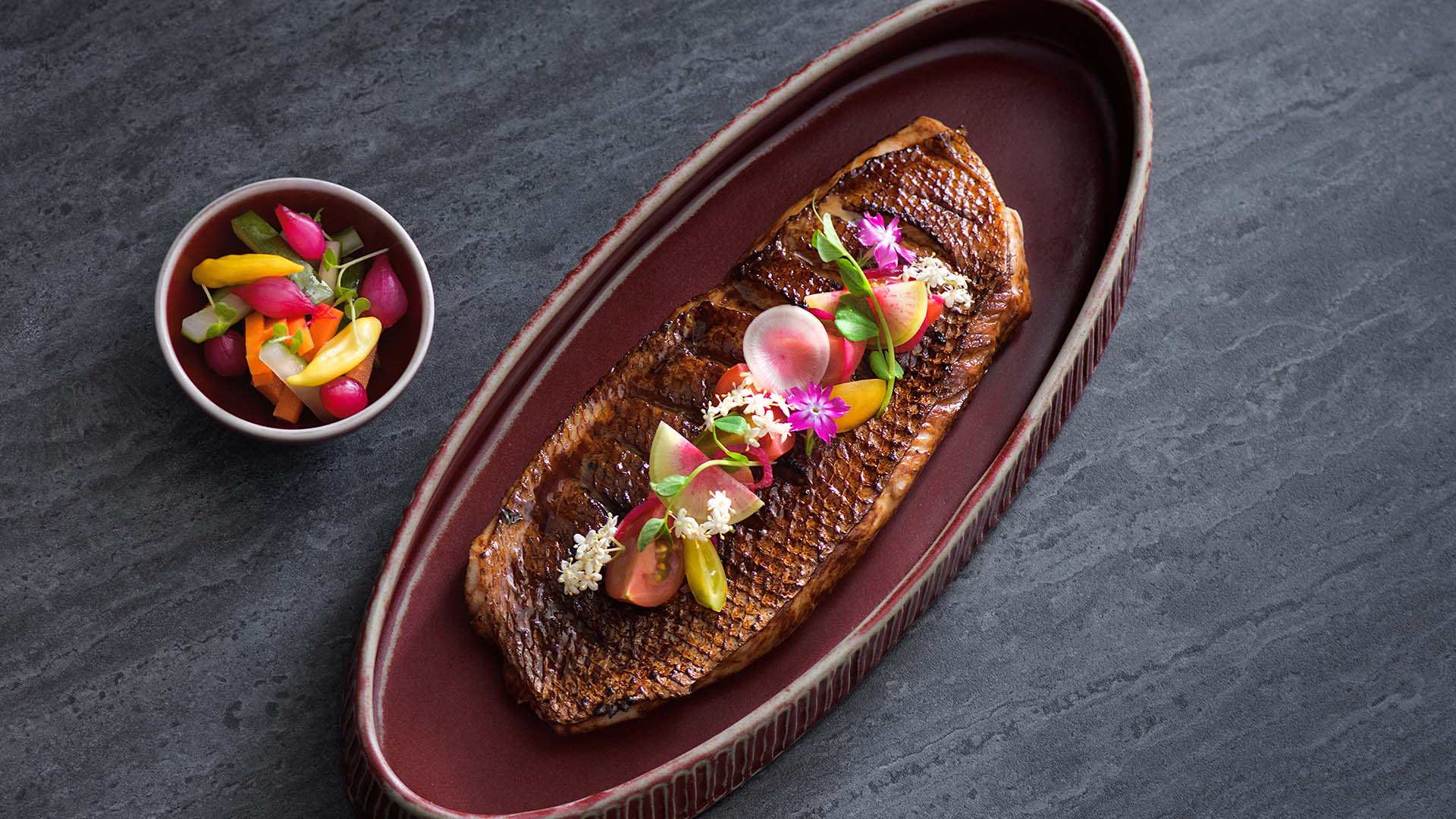It seems like you can eat anything you want in Bali. Want real-deal Naples-style pizza? Done. European fine dining? Easy. High-energy Mexican snacking with no small amount of tequila? Si, señora. With so many cosmopolitan dining options to choose from, it’d be all too easy to visit the island and not catch so much as a whiff of the local cuisine.
This would be a shame, as Balinese cuisine — all rich with spice and bold in flavor and color — is some of the finest food the archipelago has to offer.
For those new to the pleasures of the Balinese table, this hit-list of 10 of the island’s best known dishes makes a fine introduction to local eating habits.
Ikan bakar Jimbaran (Jimbaran-style grilled fish)
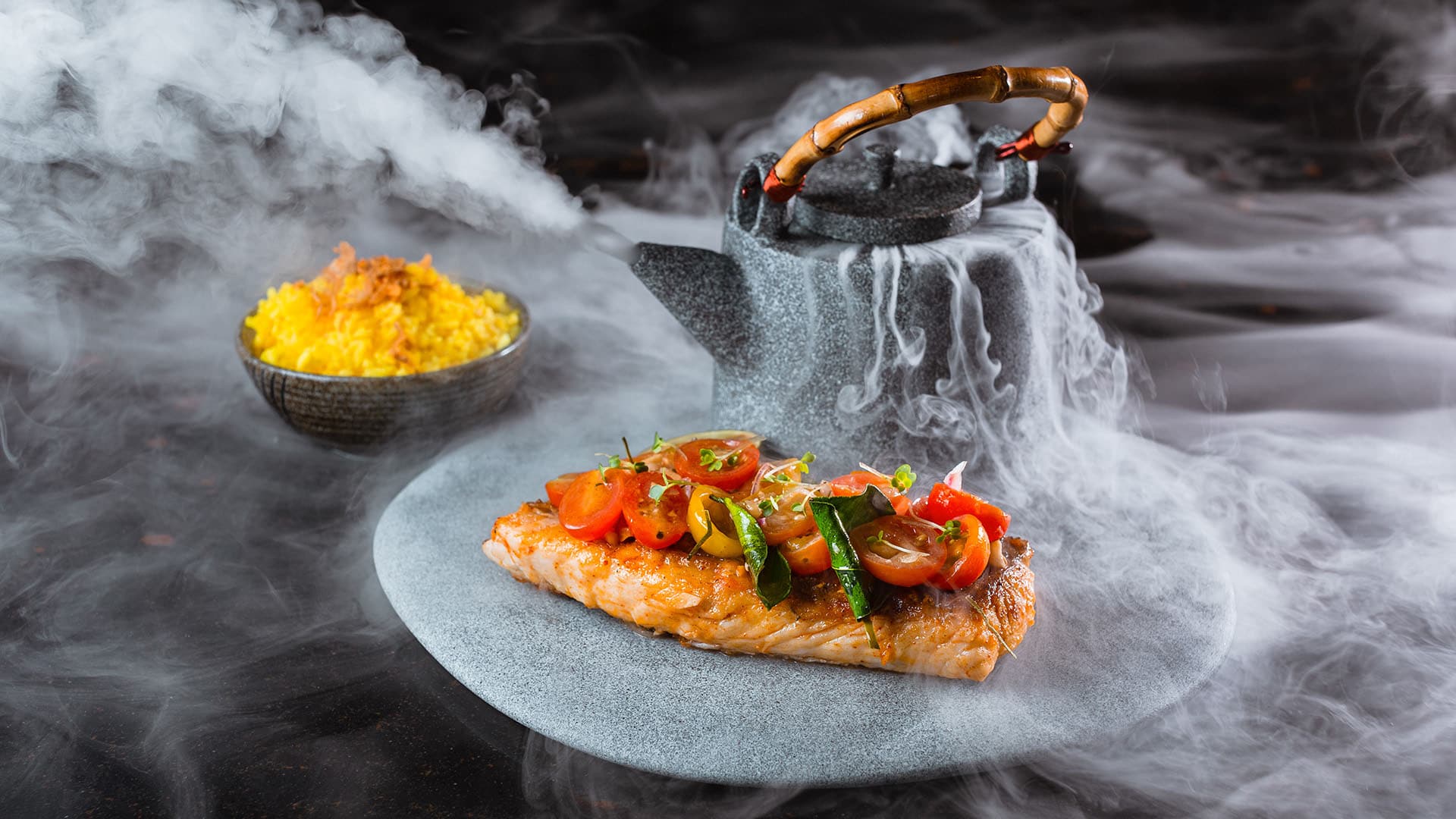
Named after the coastal fishing village and popular tourist destination, Jimbaran-style seafood is notable for its mild spice and smokiness derived from grilling fish and shellfish over smoldering coconut husks. Many of the seafood grill houses in Jimbaran Bay serve their seafood with a fiery sambal matah (see below).
Bebek betutu (steamed or roasted duck)
A ceremonial dish that’s crossed over into the mainstream, duck betutu is made by rubbing a duck inside and out with a betutu spice mix, wrapping the bird in a dried palm leaf, then burying it under hot smoking husks that will slow cook the bird for 12 hours.
The result is juicy, deeply perfumed worth traveling for. In Bali’s Gianyar and Karangasem districts, cooks still prepare betutu using this traditional method.
Babi guling (roast pork)
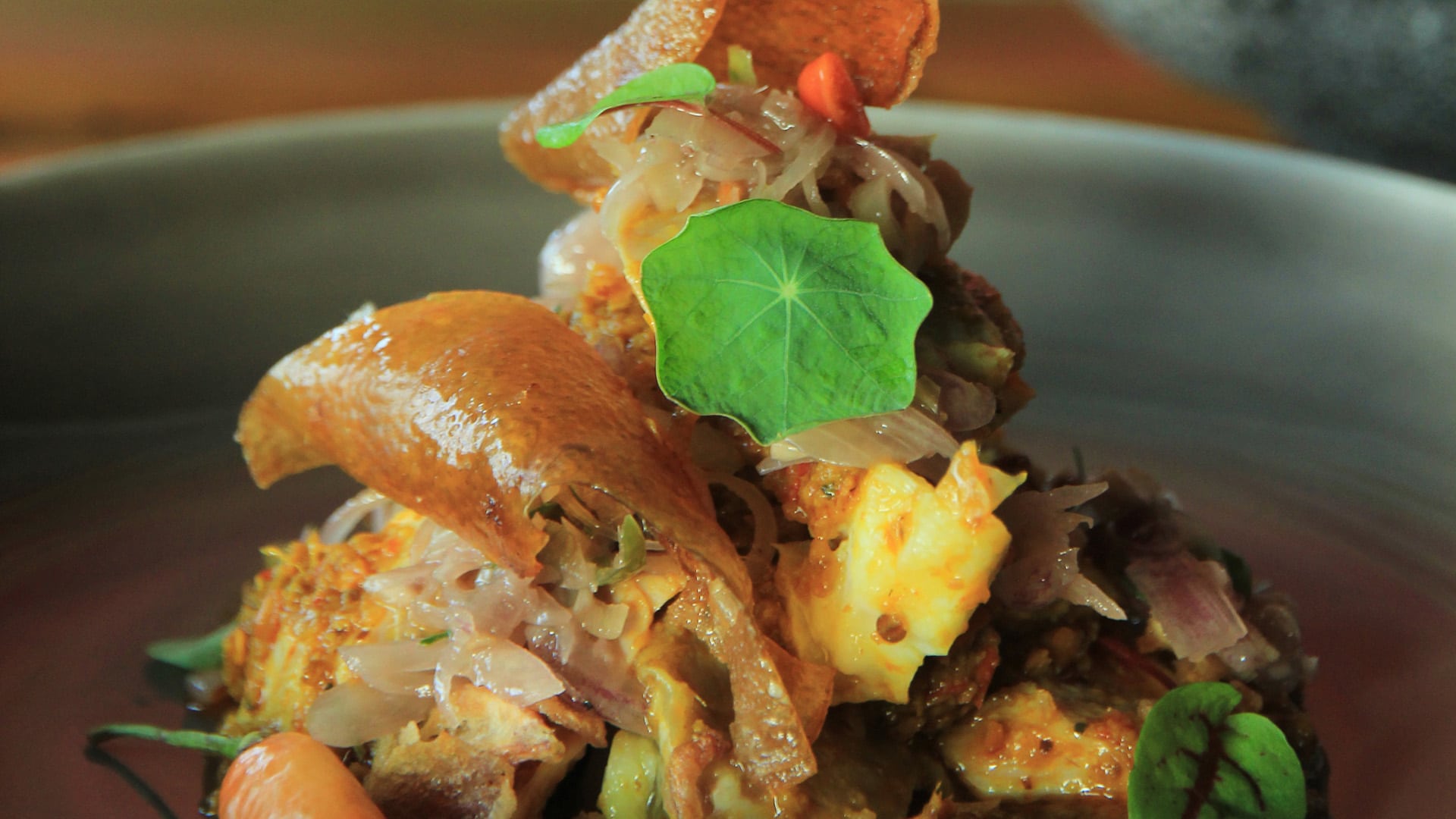
Once reserved for religious rituals, babi guling has become one of Bali’s best-known dishes, and understandably so. What’s not to like about spiced roast pork, succulent and crisp-skinned in all the right places?
In addition to the pork meat, babi guling restaurants also serve other pork dishes including urutan (a spiced sausage) and lawar (a shredded pork meat salad).
Nasi ayam Kedewatan (Kedewatan-style chicken rice)
While Balinese cuisine features many chicken dishes — we pause here to give thanks for ayam sisit, shredded chicken spiked with turmeric and sambal — nasi ayam Kedewatan is one of the island’s best known.
Named after Kedewatan village in Ubud, this style of chicken is known for its uncompromising heat levels and can be found at two well-known warungs: Nasi Ayam Kedewatan Ibu Mangku and Warung Mardika.
Bubur injin (black rice pudding)
Enjoyed as both a breakfast and dessert, bubur injin is made by simmering black glutinous rice, sugar and pandan leaves in water and coconut milk till soft and supremely comforting.
This sweet-savory pudding can be eaten hot or cold and is served with additional coconut milk and seasonal fruits.
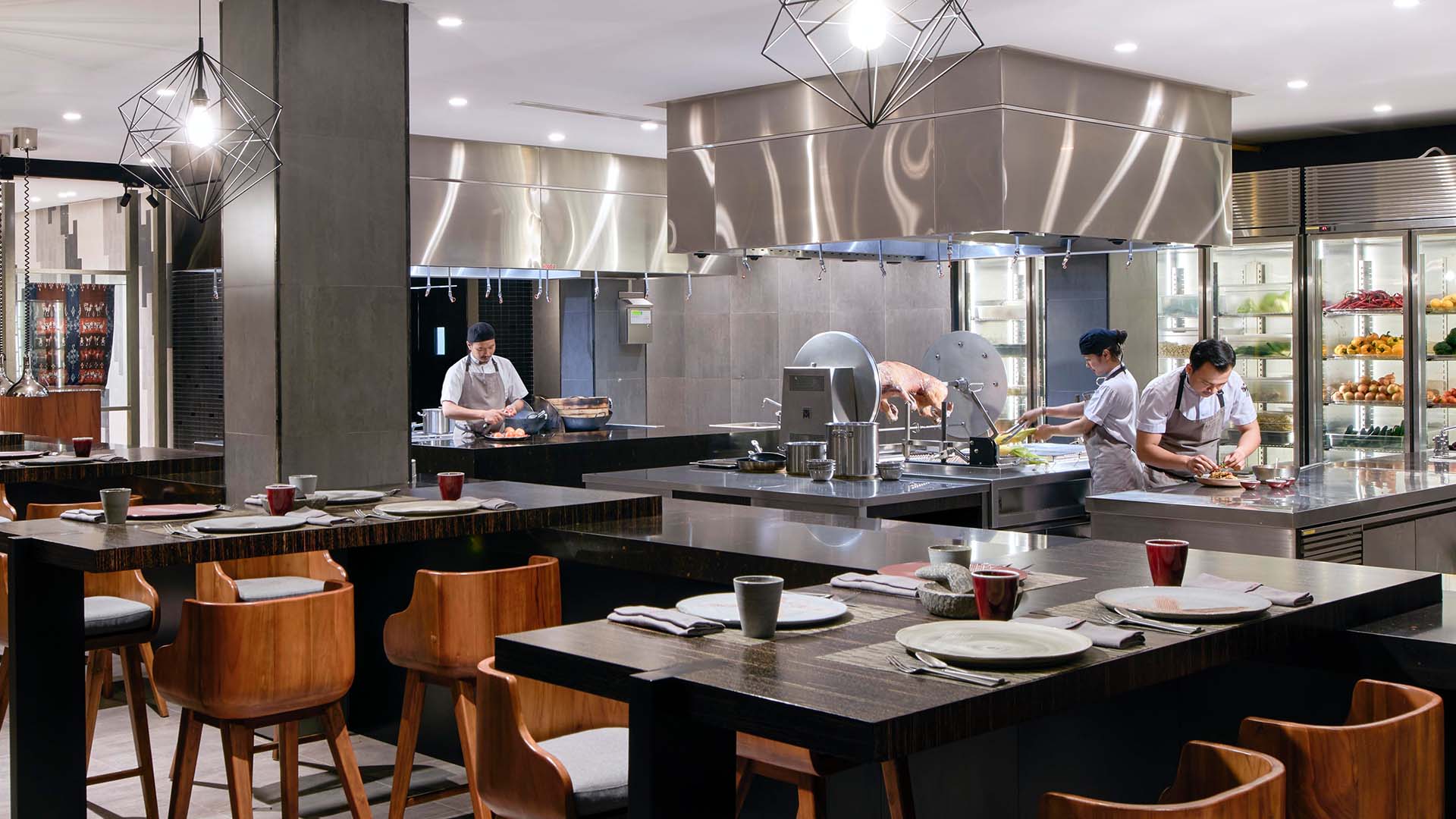
Jamu (turmeric and ginger juice)
Thanks to the global wellness movement, word of this potent turmeric and ginger tonic has spread throughout the world, so where better to try it than its birthplace?
Jamu can be found at markets, street stalls and cafes and was traditionally consumed to treat everything from pain and inflammation to chronic illnesses.
Sambal matah (chilli relish)
Every part of Indonesia can lay claim to its own sambals, spicy chili relishes made using local ingredients.
In Bali, locals place their faith in sambal matah to make dishes sing. While the recipe varies from region to region, household to household, the key ingredients of this raw, uncooked sambal are chili, garlic, red shallots, shrimp paste and coconut oil.
Sate lilit (minced meat satay)
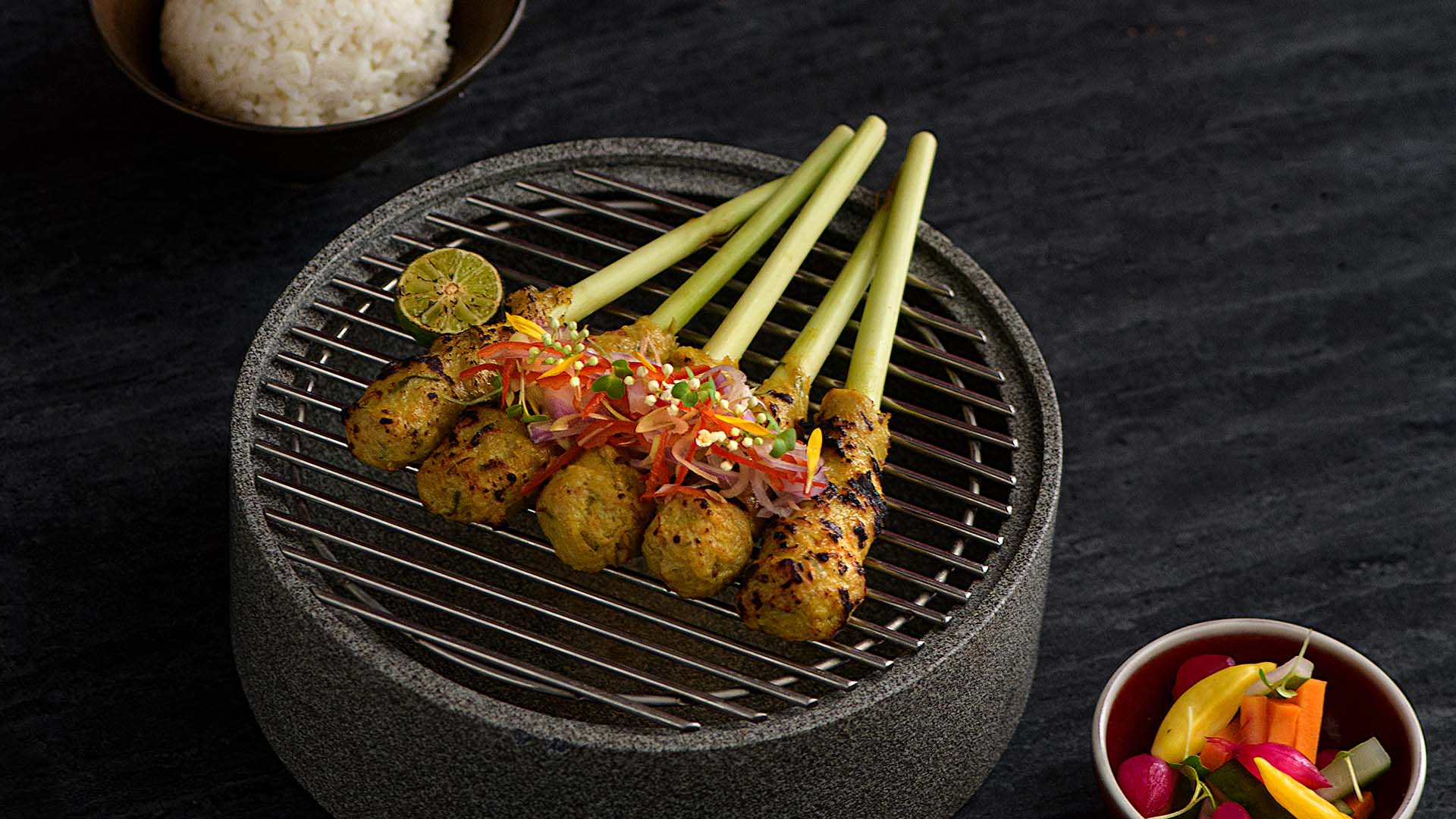
Just as sambals vary from region to region, Indonesia is also home to a diverse array of satay styles.
Bali’s best-known satay is lilit which is made by mincing meat – generally fish, chicken or pork – together with spices and “twisting” (lilit is the Bahasa word for twist) the mixture onto skewers. Look out for sate lilit made using sticks of sugar cane and lemongrass.
Tipat cantok (steamed vegetables in peanut sauce)
Vegetables dressed with a peanut-based sauce are a recurring theme throughout Singapore.
Tipat cantok is Bali’s equivalent to Java’s gado-gado and stars boiled and blanched vegetables and rice cakes bound by a loose, spicy peanut paste.
Urab (vegetable and coconut salad)
Green beans. Banana blossom. Young papaya: it seems like every vegetable or fruit in Bali can be turned into an urab, a salad featuring finely chopped ingredients, a fiery sambal, and toasted coconut.
Urabs are often found as part of one-plate rice dishes including at babi guling restaurants.

Double Ikat at Renaissance Bali Uluwatu Resort & Spa is a modern Indonesian restaurant serving regional specialties from Bali and other islands from the archipelago. A cooking studio allows guests to learn Indonesian cooking techniques and recipes from the restaurant’s head chef.
